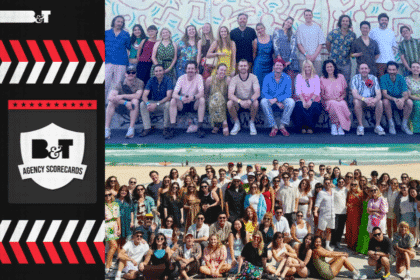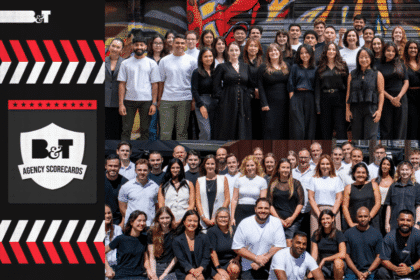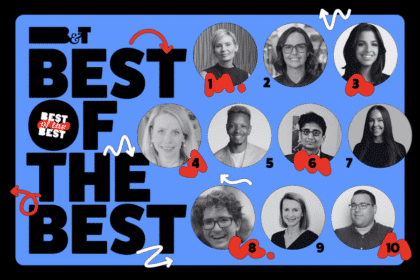While search-led digital PR is not new, in Australia the practice remains in its infancy compared to other markets, writes Ed Raine (main photo), head of digital strategy at performance marketing agency Jaywing…
For many organisations across the globe, SEO is a core part of their digital marketing strategy, a channel which offers unparalleled ways to drive continuous traffic and reach users at all stages of their customer journeys. Even with Google’s continued attempts to prioritise clicks on paid listings, the top organic position is still one of the most sought after real estates in marketing, driving on average between 30-40 per cent of all clicks according to Advanced Web Rankings data.
But despite this global awareness and investment in SEO as a whole, it is clear Australia is less developed when it comes to search-led digital PR initiatives. To put this into perspective, there are 877 per cent more monthly searches on Google for ‘Digital PR’ in the UK compared to Australia, when population wise the UK is only two and a half times larger.
Digital PR vs. traditional PR
Traditional PR and digital PR are not to be confused – digital PR in most scenarios is a strategy for acquiring quality media coverage to assist with a website’s organic search (SEO) results. While the brand awareness from the media coverage certainly should not be sniffed at, the underlying goal is to build strong authority, brand mentions and quality backlinks to help improve website rankings.
Some traditional PR will achieve these goals too. For example, new startups often see their SEO performance grow in the early stages due to coverage relating to funding, key hires and product developments.
Digital PR looks to create continuous opportunities for coverage on sites which are valuable from an SEO perspective, which could be very different to traditional industry press. Digital PR also factors in ways to attract backlinks from that coverage rather than just the coverage itself, this is often called as a ‘linkworthy asset’ – something that is foundational to the coverage and must feature in the release to complete the story.
The evolution of digital PR
Digital PR is not a new strategy in Europe or North America, larger brands have been using this approach to offpage SEO (often referred to as link building) since early 2013 when websites around the world started to receive ranking penalties for abusing paid link building strategies at scale. Digital PR and content-led link building initiatives were quickly seen as a way to not only achieve relevant backlinks, but allow a more scaled approach by creating things which were fundamentally more shareable and useful for more websites.
Since then, UK-based agencies such as Rise at Seven, have built a reputation off focusing on search-led digital PR, transforming PR to align with performance marketing objectives.
Our agency, which has offices in the UK and Australia, has seen the significant differences in approach to offpage SEO. While we speak to many prospective clients still working on offpage tactics, which go against Google’s Webmaster Guidelines, our UK team has a large digital PR division that directly supports their SEO team. The two services are often delivered in tandem.
In the last 12 months we’ve started to see a change in client demand, which is perhaps a sign digital PR is becoming more popular and sought after by marketers. This is likely an outcome of digital trends spreading around the global marketing community, but also a necessary focus as on-page SEO opportunities begin to thin for established players.
It is not entirely clear why Australia has lagged behind other parts of the world in the digital PR space, but it is likely due to a slightly different media landscape and the approach to digital marketing in the local market.
These differences have meant our team have adapted their strategies from those which are successful overseas, which includes:
Expand media horizons – Compared to the UK, it is clear there are a lot less media outlets to engage. This can often mean less chance of success and a lower overall success for campaigns that do break through. It is vital that we consider how our campaigns can be globalised, increasing the number of sites it may be relevant for.
Piggy back if you’re a smaller brand – Getting media coverage can often be much more difficult if you are a smaller brand without strong consumer awareness. Finding ways to align your campaign with topics and brands which people do want to talk about is a great way to gain coverage as a smaller business.
Invest in quality and quantity can come – Rather than seeing quality and quantity as two contrasting approaches, deliver campaigns which can achieve both because they are newsworthy and shareable that all media outlets want to cover your story. This is often a mindshift for marketers, because it means they need to take more risks and invest more heavily in a few great ideas, rather than executing loads of half-baked ideas which nobody will want to cover. To put this into perspective, we aim for quarterly hero campaigns, but fill the periods in between with smaller tactical campaigns.
While the digital PR strategies of Australian organisations remain in their relevant infancy when compared to some international markets, there is a growing understanding and acceptance that it is needed in order to ensure continuous opportunities for organic search growth in increasingly competitive industries. Marketers who recognise this now and invest appropriately will once again see competitive advantage in search.








